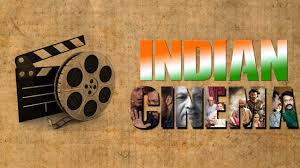Discover how harmonic tension creates suspense in Indian cinema. Explore the science behind Bollywood thrillers and how music shapes audience emotions.
Music has long been an integral part of Indian cinema, playing a crucial role in shaping emotions and enhancing storytelling. One of the most powerful yet often overlooked aspects of film music is harmonic tension, a technique used to create suspense and evoke emotional responses from the audience. In Bollywood and regional Indian cinema, suspenseful moments are amplified through intricate musical compositions, blending traditional ragas with modern orchestration. This article explores the science behind harmonic tension in Indian cinema, examining how composers craft suspense and keep audiences on the edge of their seats.
The Role of Music in Indian Cinema
The Power of Soundscapes
Music in Indian cinema is more than just background sound; it is an essential narrative tool. From the eerie silence before a jump scare to the crescendo of violins signaling an impending climax, music heightens the cinematic experience.
Indian Classical Influence
Unlike Hollywood, where orchestral scores dominate, Indian cinema incorporates classical ragas, folk music, and electronic elements to create distinct auditory experiences. Suspenseful sequences often rely on dissonant chords and unpredictable tempo shifts rooted in Indian classical traditions.
Understanding Harmonic Tension
What Is Harmonic Tension?
Harmonic tension arises when certain musical notes or chords create a sense of unease or anticipation. It is achieved through:
- Dissonance (clashing notes that create discomfort)
- Unresolved chords (chords that do not resolve to a stable tone)
- Modulation (sudden key changes)
- Syncopation (unexpected rhythm patterns)
The Science Behind Suspenseful Music
Neuroscientific research shows that suspenseful music activates the amygdala, the brain’s fear-processing center. When exposed to dissonant sounds or unpredictable harmonies, the brain anticipates danger, leading to heightened emotional responses.
Techniques Used in Indian Suspense Scores
1. Ragas and Emotional Impact
Indian composers often use specific ragas to evoke suspense:
- Raga Bhairavi – Often used in eerie, unsettling scenes
- Raga Darbari Kanada – Known for its deep, mysterious tones
- Raga Malkauns – Creates a haunting and hypnotic effect
2. Microtonal Shifts (Shruti Variations)
Unlike Western music, which follows a 12-tone scale, Indian music utilizes shruti (microtones), allowing for subtle pitch variations that add unpredictability to the score.
3. Rhythmic Tension (Tala Variations)
Complex tala structures create rhythmic unpredictability, keeping audiences engaged. Examples include:
- Teental (16 beats) – Commonly used for building tension
- Jhaptal (10 beats) – Adds a sense of imbalance
4. Use of Silence
Strategic silence before a musical climax enhances the impact of suspenseful moments. Bollywood composers masterfully use this technique to create breath-holding tension.
Case Studies: Iconic Suspense Scores in Indian Cinema
1. Raman Raghav 2.0 (2016) – Composed by Ram Sampath
The film’s eerie sound design uses dissonant electronic beats mixed with Indian folk instruments to enhance its psychological thriller elements.
2. Kahaani (2012) – Composed by Clinton Cerejo
The soundtrack blends eerie sitar melodies with soft, ominous vocals, maintaining an air of mystery throughout the film.
3. Tumbbad (2018) – Composed by Jesper Kyd
An international collaboration, the score combines deep orchestral undertones with traditional Indian percussion, creating an unsettling yet captivating auditory experience.
Bollywood vs. Hollywood: A Comparative Perspective
While Hollywood suspense scores rely heavily on orchestral crescendos (e.g., Hans Zimmer, Bernard Herrmann), Bollywood integrates traditional Indian elements with modern electronic synthesis. This fusion creates a unique auditory identity that distinguishes Indian thrillers from their Western counterparts.
Key Differences:
| Aspect | Bollywood Thrillers | Hollywood Thrillers |
|---|---|---|
| Musical Influence | Classical Ragas, Folk | Western Orchestra, Synth |
| Rhythmic Structure | Complex Tala Patterns | Regular Time Signatures |
| Instrumentation | Sitar, Tabla, Harmonium | Strings, Brass, Percussion |
| Emotional Depth | Microtonal Variations | Crescendo-Based Tension |
The Future of Suspense Music in Indian Cinema
With advancements in AI-generated music and evolving sound engineering techniques, Indian composers are now experimenting with hybrid orchestration, blending traditional instruments with digital synthesizers to craft immersive soundscapes. The rise of OTT platforms has also pushed filmmakers to innovate their approach to suspenseful scores, adapting to global standards while retaining a distinctly Indian essence.
Harmonic tension is a powerful tool that defines suspenseful music in Indian cinema. By skillfully blending dissonant melodies, complex rhythms, and microtonal variations, composers create emotionally charged soundscapes that keep audiences engaged. As Indian cinema continues to evolve, so too will its approach to musical suspense, offering thrilling experiences that resonate both locally and internationally.
1. What is harmonic tension in music?
Harmonic tension occurs when musical elements like dissonance, unresolved chords, and syncopation create a sense of anticipation or unease, commonly used in suspenseful film scores.
2. How does Indian classical music contribute to suspenseful scores?
Indian classical music incorporates microtonal shifts, complex ragas, and tala structures, enhancing suspense through unpredictability and emotional depth.
3. What are some famous Indian thriller movie scores?
Some notable examples include Raman Raghav 2.0, Kahaani, and Tumbbad, all of which use innovative musical techniques to create suspense.
4. How does Bollywood’s approach to suspense music differ from Hollywood’s?
Bollywood integrates traditional ragas, folk elements, and tala variations, while Hollywood relies more on orchestral crescendos and digital sound design.
5. What trends will shape the future of suspense music in Indian cinema?
Hybrid orchestration, AI-assisted compositions, and evolving sound engineering techniques will play a crucial role in shaping future suspense scores in Indian films.
